Anthropogenic Actions and Socioenvironmental Changes in Lake of Juá, Brazilian Amazonia
Abstract
1. Introduction
2. Materials and Methods
2.1. Area of Study
2.2. Data Collection and Analysis
3. Results and Discussion
3.1. Brief History of the Urbanization Process around Lake of Juá
3.2. Landscape Changes and Socio-Environmental Impacts around the Lake
- I
- Preserve the geological and biological ensemble that makes up the entire APA in the Juá area, as well as protect biological diversity, water resources and natural heritage, ensuring the sustainable character of human activity in the APA area;
- II
- Order the occupation of land and promote the protection of abiotic resources within their limits, in order to ensure the well-being of the human populations that live there, safeguard or increase local ecological conditions and maintain relevant landscapes and cultural attributes;
- III
- To supervise the practice of scientific and ecological tourism activities, as well as economic activities compatible with environmental conservation;
- IV
- Exercise environmental control and monitoring activities in order to allow, monitor and discipline, over time, interferences in the environment;
- V
- Promote environmental education, scientific research and the conservation of cultural and historical values [38].
4. Conclusions
Author Contributions
Funding
Institutional Review Board Statement
Informed Consent Statement
Data Availability Statement
Acknowledgments
Conflicts of Interest
References
- Becker, B.K. Redefinindo a Amazônia: O vetor Tecno-Ecológico. In Brasil: Questões Atuais Da Reorganização Do Território, 8th ed.; Castro, I.E., Gomes, P.C.C., Corrêa, R.L., Eds.; Bertrand Brasil: Rio de Janeiro, Brazil, 2012. [Google Scholar]
- Santos, M. Metamorfose Do Espaço Habitado, 5th ed.; Hucitec: São Paulo, Brazil, 1997. [Google Scholar]
- Pinto, P.J.; Kondolf, G.M. The Fit of Urban Waterfront Interventions: Matters of Size, Money and Function. Sustainability 2020, 12, 4079. [Google Scholar] [CrossRef]
- Wantzen, K.M.; Alves, C.B.M.; Badiane, S.D.; Bala, R.; Blettler, M.; Callisto, M.; Cao, Y.; Kolb, M.; Kondolf, G.M.; Leite, M.F.; et al. Urban Stream and Wetland Restoration in the Global South—A DPSIR Analysis. Sustainability 2019, 11, 4975. [Google Scholar] [CrossRef]
- Gouveia, R.L.; Selva, V.S.F.; Paz, Y.M.P. Governança ambiental: Contribuição para a revitalização de rios urbanos. Rev. Bras. Meio Ambiente 2019, 5, 55–70. [Google Scholar]
- Vieira, T.A.; Panagopoulos, T. Urban Forestry in Brazilian Amazonia. Sustainability 2020, 12, 3235. [Google Scholar] [CrossRef]
- Abreu, J.R.P. Gestão Ambiental Aplicada Ao Urbanismo. Estudo De Caso: Expansão Urbana No Município De Santarém—Pará—Brasil. Master’s Thesis, Universidade Federal do Pará, Belém, Brazil, 2015. [Google Scholar]
- Cardoso, M.C.; Alves, H.S.; Vieira, T.A. Impactos socioambientais: A percepção de uma comunidade ribeirinha do Baixo Amazonas, Pará, Brasil. Gaia Sci. 2020, 14, 31–51. [Google Scholar] [CrossRef]
- Chakraborty, S.; Avtar, R.; Raj, R.; Thu Minh, H.V. Village Level Provisioning Ecosystem Services and Their Values to Local Communities in the Peri-Urban Areas of Manila, The Philippines. Land 2019, 8, 177. [Google Scholar] [CrossRef]
- Sousa, W.L.; Vieira, T.A. An Amazonian lake and the quality of life of its women: The case of Maicá, Santarém, Brazil (2018). Environ. Dev. Sustain. 2021, 23. [Google Scholar] [CrossRef]
- Cunningham, A.B. Applied Ethnobotany: People, Wild Plant Use and Conservation; Routledge: London, UK, 2001. [Google Scholar]
- Medeiros, H.M.N.; Guerreiro, Q.L.d.M.; Vieira, T.A.; Silva, S.M.S.d.; Renda, A.I.d.S.A.; Oliveira-Junior, J.M.B. Alternative Tourism and Environmental Impacts: Perception of Residents of an Extractive Reserve in the Brazilian Amazonia. Sustainability 2021, 13, 2076. [Google Scholar] [CrossRef]
- Instituto Nacional de Pesquisas Espaciais (INPE). Monitoramento da Floresta Amazônica Brasileira por Satélite—PRODES, São José dos Campos, INPE. 2018. Available online: http://www.obt.inpe.br/OBT/assuntos/programas/amazonia/prodes (accessed on 12 November 2018).
- Costa, T.C.S. A Relação Cidade e Rio Na Amazônia: Mudanças e Permanências Frente Ao Processo De Urbanização Recente, o Exemplo De Santarém (PA). Master’s Thesis, Universidade Federal do Pará, Belém, Brazil, 2012. [Google Scholar]
- Cardoso, M.C.; Souza, R.R.; Alves, H.S.; Vieira, T.A. Expansão urbana em Santarém, Pará: Uma análise a partir da ocupação vista alegre do juá. In Anais Do VIII Seminário Internacional Sobre Desenvolvimento Regional; Universidade de Santa Cruz do Sul: Santa Cruz do Sul, Brazil, 2017. [Google Scholar]
- Oliveira, J.M.G.C. Expansão urbana e periferização de Santarém—PA, Brasil: Questões para o planejamento urbano. In Anais do X Coloquio Internacional de Geocrítica—Diez Años de Cambios en El Mundo, En La Geografía y en Las Ciencias Sociales, 1999–2008; Universidad de Barcelona: Barcelona, Spain, 2008. [Google Scholar]
- Silva, V.A.; Silva, A.S.L.; Alves, H.A.; Vieira, T.A. História e marco legal de um projeto de assentamento agroextrativista na Amazônia Oriental, Brasil. Multitemas 2021, 26, 255–279. [Google Scholar] [CrossRef]
- Mendes, L.A.S.; Oliveira, J.M.G.C. Expansão urbana e a produção de periferias em Santarém—Pará: Em estudo sobre o entorno da Avenida Fernando Guilhon. In Anais XVI do Encontro Nacional dos Geógrafos; Universidade Federal do Rio Grande: Porto Alegre, Brazil, 2010. [Google Scholar]
- Biguelini, C.P.; Freisleben, A.P. Alterações da Paisagem Urbana em Francisco Beltrão/PR e suas consequências sócio-ambientais. Geoingá Rev. Do Programa De Pós-Grad. Em Geogr. 2010, 2, 74–101. [Google Scholar]
- Salles, M.C.T. Expansão urbana e conflito ambiental: Uma descrição da problemática do município de Mossoró, RN—Brasil. Soc. Nat. 2013, 25, 281–290. [Google Scholar] [CrossRef][Green Version]
- Perveen, S.; Kamruzzaman, M.; Yigitcanlar, T. Developing Policy Scenarios for Sustainable Urban Growth Management: A Delphi Approach. Sustainability 2017, 9, 1787. [Google Scholar] [CrossRef]
- Galvão, R.F.P.; Urushima, A.Y.F.; Hara, S.; Jong, W.D. Analysis of Land Transition Features and Mechanisms in Peripheral Areas of Kyoto (1950–1960). Sustainability 2020, 12, 4502. [Google Scholar] [CrossRef]
- Ramos, G.C.D. Real Estate Industry as an Urban Growth Machine: A Review of the Political Economy and Political Ecology of Urban Space Production in Mexico City. Sustainability 2019, 11, 1980. [Google Scholar] [CrossRef]
- Souza, F.P.; Silva, J.A.F. Estudo de Ocupação Espontânea na Lagoa do Vigário, no Município de Campos dos Goytacazes—RJ, propostas mitigadoras e amparo legal. Bol. Do Obs. Alberto Ribeiro Lamego 2009, 3, 31–50. [Google Scholar] [CrossRef]
- Cardoso, M.C.; Silva, R.E.; Silva, A.D.B.; Alves, H.S. Pescadores artesanais, conflito de interesses e os recursos pesqueiros vistos como capital natural crítico: O caso do Lago do Juá em Santarém, Pará. O Soc. Em Questão 2018, 40, 309–332. [Google Scholar]
- Barroso, L.R.; Mello, P.P.C. In defense of the Amazon Forest: The role of law and courts. Harv. Int. Law J. 2021, 62, 68–94. [Google Scholar]
- Cometti, J.L.S.; Cabral, J.J.P.S.; Conceição, T.M. Indicadores de pressão-estado-resposta para avaliação da conservação ambiental de riachos urbanos. Rev. Ibero-Am. Ciências Ambient. 2019, 10, 194–205. [Google Scholar] [CrossRef]
- Abdallah, P.R.; Bacha, C.J.C. Evolução da atividade pesqueira no Brasil: 1960-1994. Rev. Teor. E Evidência Econômica 1999, 7, 9–24. [Google Scholar]
- Severo, C.M.; Miguel, L.A. Pesca Artesanal em Santa Catarina—BR: Experiências Passadas e Presentes da Comunidade da Praia da Pinheira. Rev. Bras. Agroecol. 2009, 4, 3243–3246. [Google Scholar]
- Corrêa, J.M.S.; Rocha, M.S.; Santos, A.A.; Serrão, E.M.; Zacardi, D.M. Caracterização da pesca artesanal no Lago do Juá, Santarém, Pará. Rev. Agrogeoambiental 2018, 10, 61–74. [Google Scholar]
- Falabela, P.G.R. A Pesca No Amazonas: Problemas E Soluções; Fundação Universitária do Amazonas: Manaus, Brazil, 1985. [Google Scholar]
- Ribeiro, F.A.S.; Carvalho Junior, J.R.; Fernandes, J.B.K.; Nakayama, L. Comércio brasileiro de peixes ornamentais. Panor. Da Aqüicultura 2008, 18, 54–59. [Google Scholar]
- Jacobi, P.R.; Fracalanza, A.P.; Silva-Sánchez, S. Governança da água e inovação na política de recuperação de recursos hídricos na cidade de São Paulo. Cad. Metrop. 2015, 17, 61–81. [Google Scholar] [CrossRef][Green Version]
- Grostein, M.D. Metrópole e expansão urbana a persistência de processos “insustentáveis”. São Paulo Em Perspect. 2001, 15, 13–19. [Google Scholar] [CrossRef]
- Melo, T.T.; Araújo, R. de S. Processo Urbano e Ocupação Espontânea: Campos dos Goytacazes. Persp. Online Hum. sociais Apl. 2014, 9, 56–69. [Google Scholar] [CrossRef]
- Brasil. Lei Federal 10.257 de 10 de Julho de 2001. Regulamenta Os Arts. 182 E 183 Da Constituição Federal, Estabelece Diretrizes Gerais Da Política Urbana E Dá Outras Providências. Available online: http://www.planalto.gov.br/ccivil_03/leis/leis_2001/l10257.htm (accessed on 27 July 2021).
- Rettondini, A.d.P.; Vanzela, L.S.; Vazquez, G.H.; Américo-Pinheiro, J.H.P.; Mansano, C.F.M. A responsabilidade do município pela omissão na invasão, ocupação e posse em áreas de manaciais: Billings e o município de São Bernardo do Campo. Int. J. Dev. Res. 2020, 10, 42279–42284. [Google Scholar] [CrossRef]
- Santarém. Law No. 19,206, 28 December 2012. Available online: https://sapl.santarem.pa.leg.br/media/sapl/public/normajuridica/2012/164/164_texto_integral.pdf (accessed on 28 June 2021).
- Nascimento, E.D.S.; Silva, S.S.D.; Bordignon, L.; Melo, A.W.F.D.; Brandão Junior, A.; Souza Junior, C.M.; Silva Junior, C.H.L. Roads in the Southwestern Amazon, State of Acre, between 2007 and 2019. Land 2021, 10, 106. [Google Scholar] [CrossRef]
- Poccard-Chapuis, R.; Plassin, S.; Osis, R.; Pinillos, D.; Martinez Pimentel, G.; Thalês, M.C.; Laurent, F.; de Oliveira Gomes, M.R.; Ferreira Darnet, L.A.; de Carvalho Peçanha, J.; et al. Mapping Land Suitability to Guide Landscape Restoration in the Amazon. Land 2021, 10, 368. [Google Scholar] [CrossRef]
- Rorato, A.C.; Picoli, M.C.A.; Verstegen, J.A.; Camara, G.; Silva Bezerra, F.G.; Escada, M.I.S. Environmental Threats over Amazonian Indigenous Lands. Land 2021, 10, 267. [Google Scholar] [CrossRef]
- Côrte, D.A.A. Planejamento E Gestão De APAs: Enfoque Institucional. Série Meio Ambiente Em Debate; IBAMA: Brasília, Brazil, 1997. [Google Scholar]
- Morsch, M.R.S.; Mascaró, J.J.; Pandolfo, A. Sustentabilidade urbana: Recuperação dos rios como um dos princípios da infraestrutura verde. Ambiente Construído 2017, 17, 305–321. [Google Scholar] [CrossRef]
- Ritter, C.D.; McCrate, G.; Nilsson, R.H.; Fearnsided, P.M.; Palme, U.; Antonelli, A. Environmental impact assessment in Brazilian Amazonia: Challenges and prospects to assess biodiversity. Biol. Conserv. 2017, 206, 161–168. [Google Scholar] [CrossRef]
- Padoch, C.; Steward, A.; Pinedo-Vasquez, M.; Putzel, L.; Ruiz, M.M. Urban Residence, Rural Employment, and the Future of Amazonian Forests. In The Social Lives of Forests Past, Present, and Future of Woodland Resurgence; Hecht, S.B., Morrison, K.L., Padoch, C., Eds.; University of Chicago Press: Chicago, IL, USA, 2014. [Google Scholar]

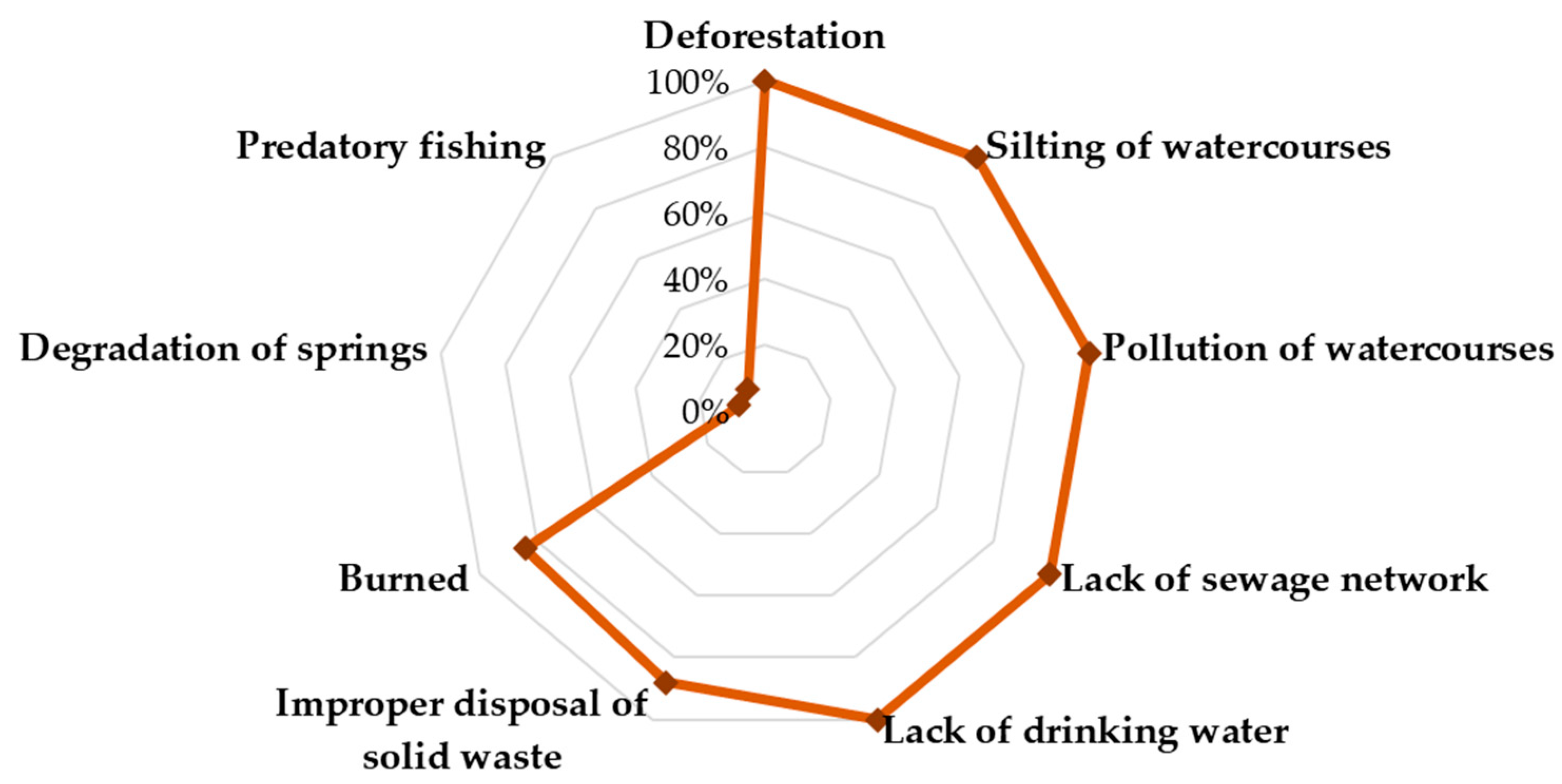
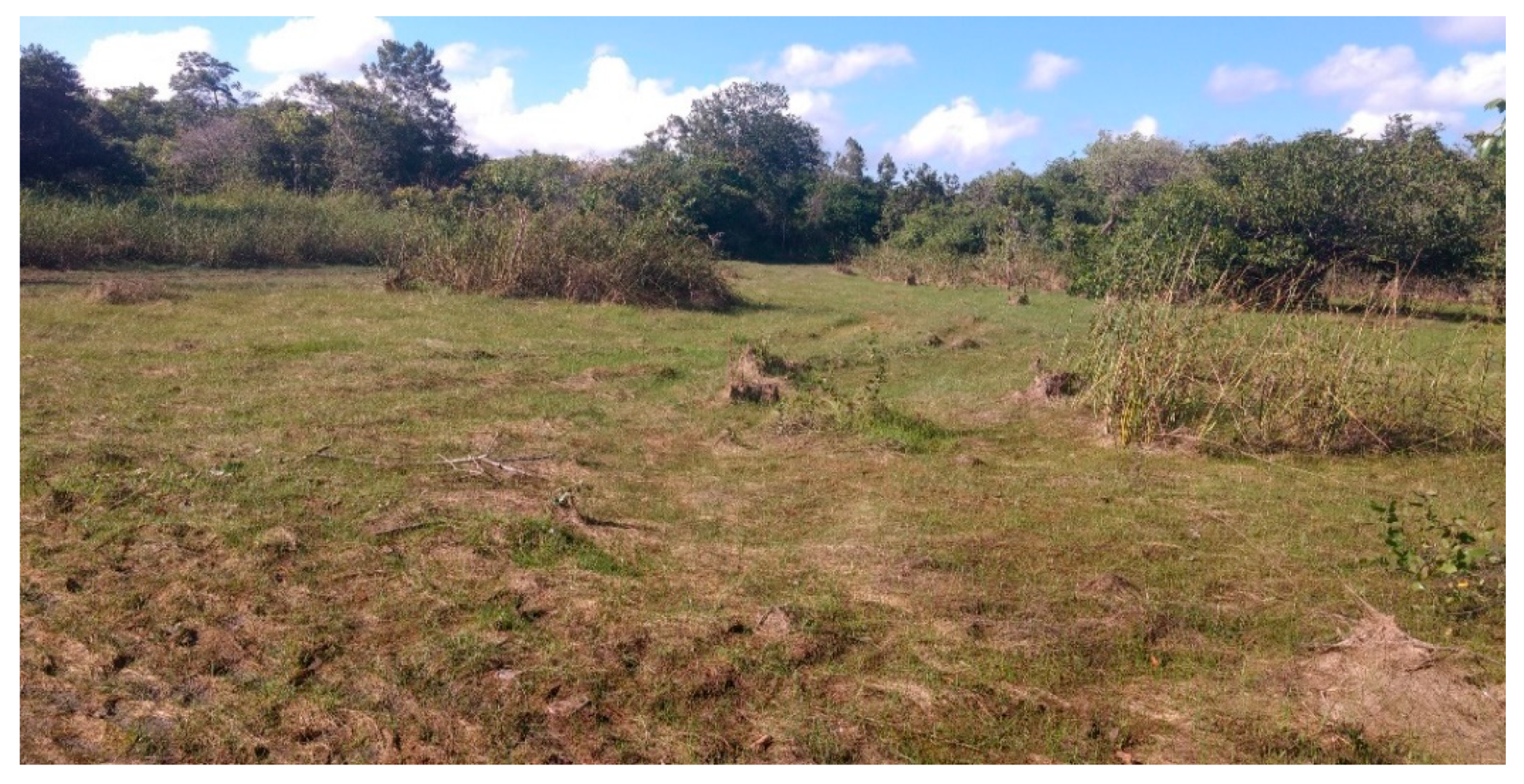
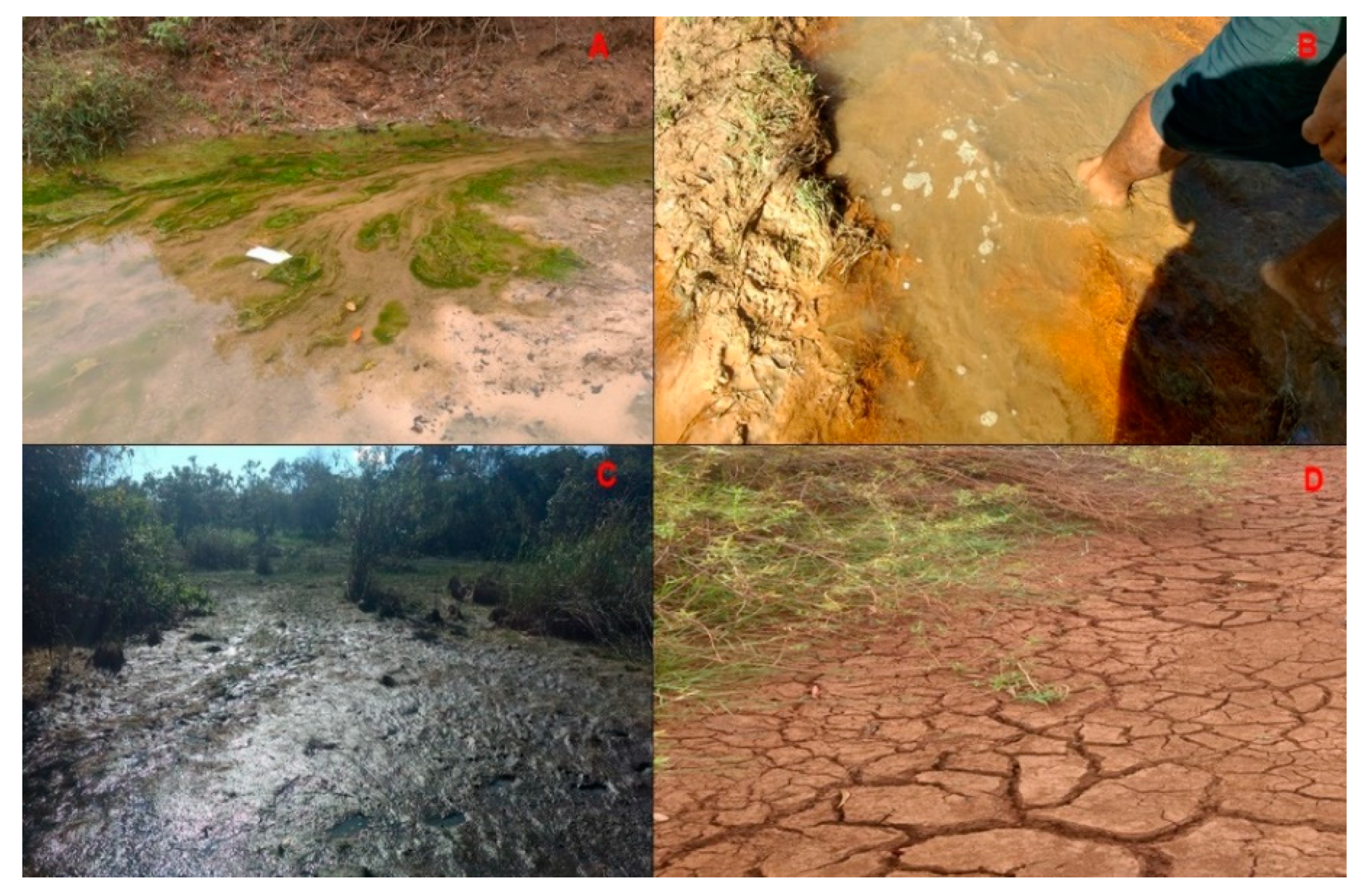
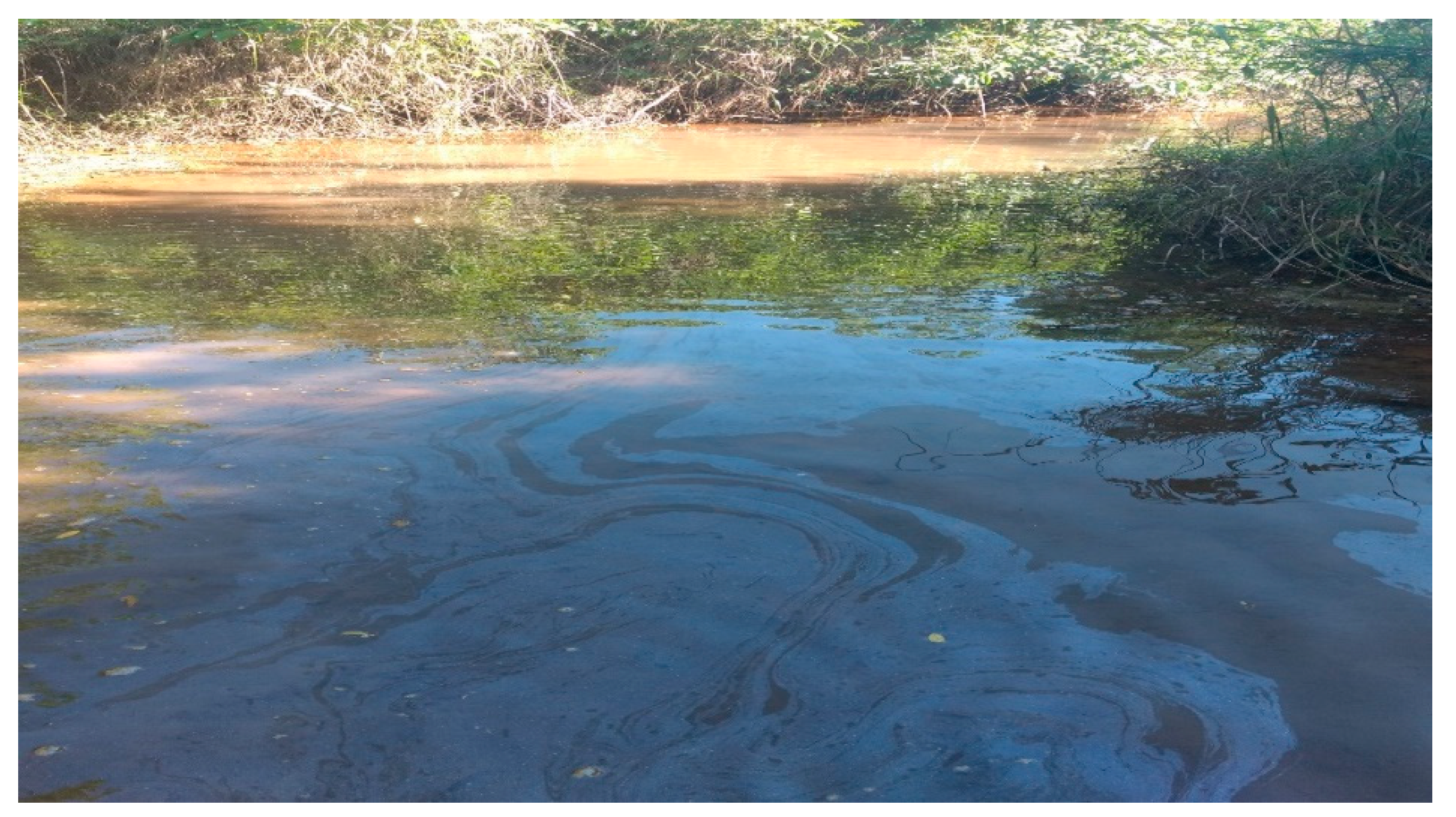
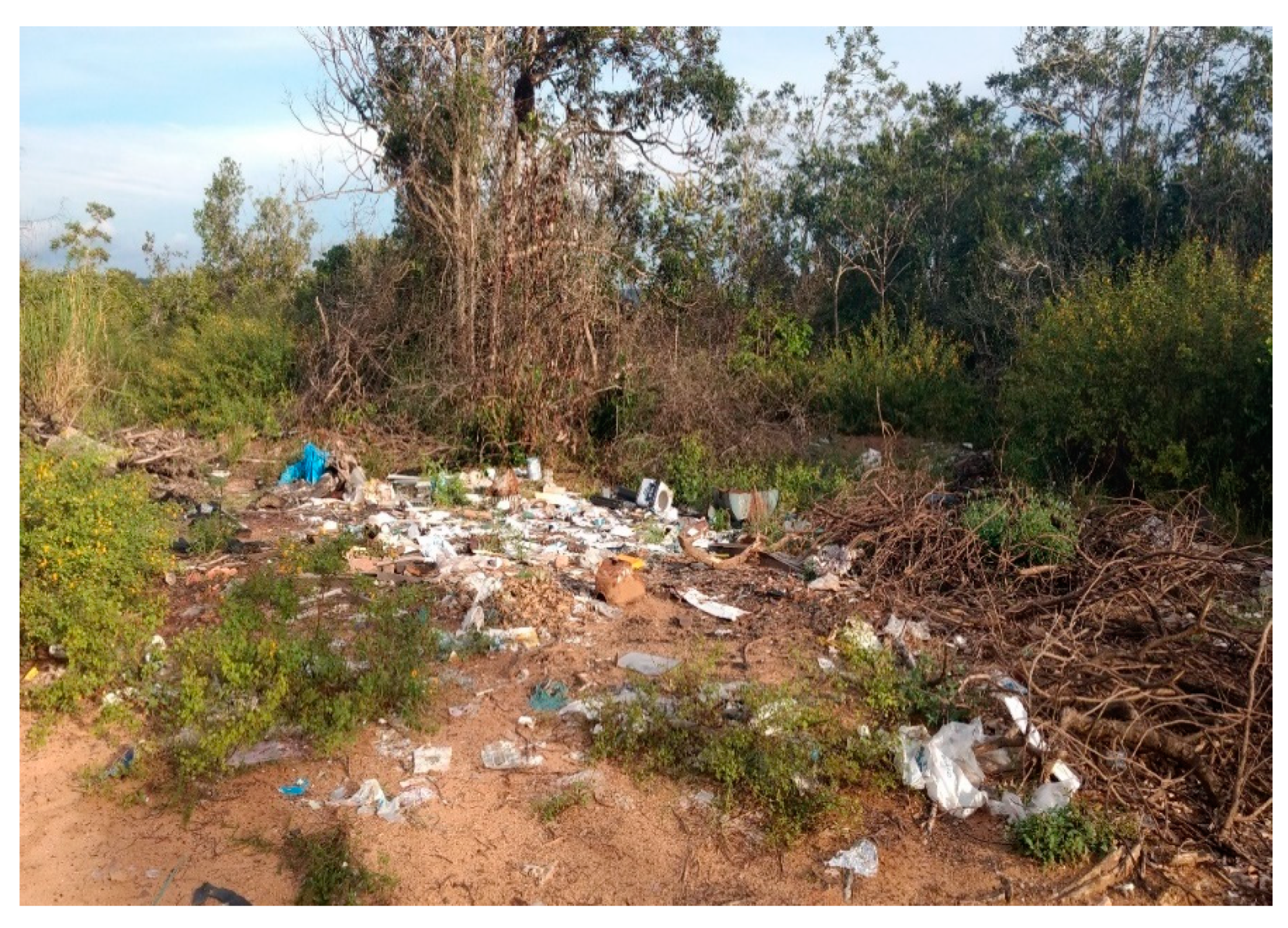
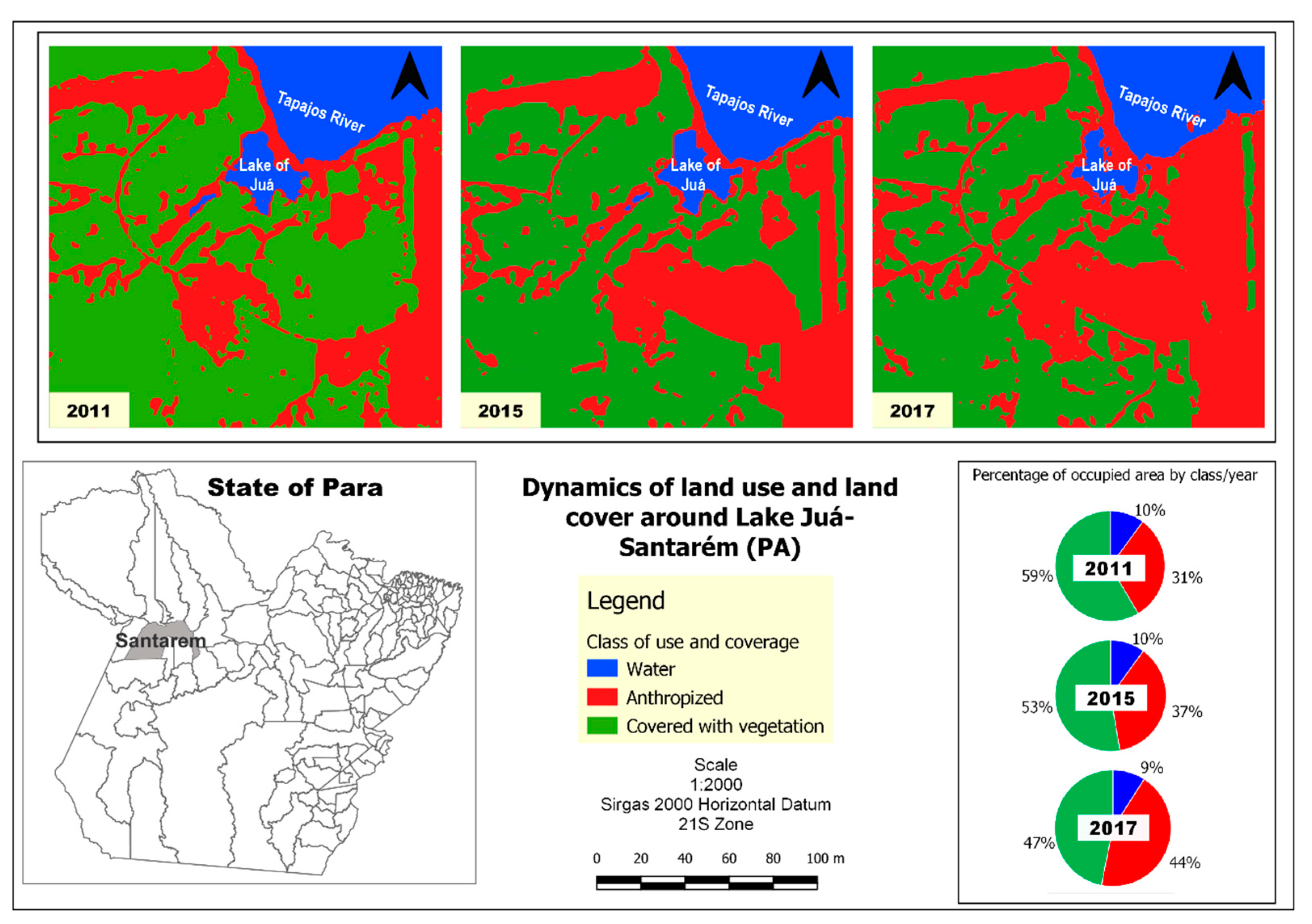
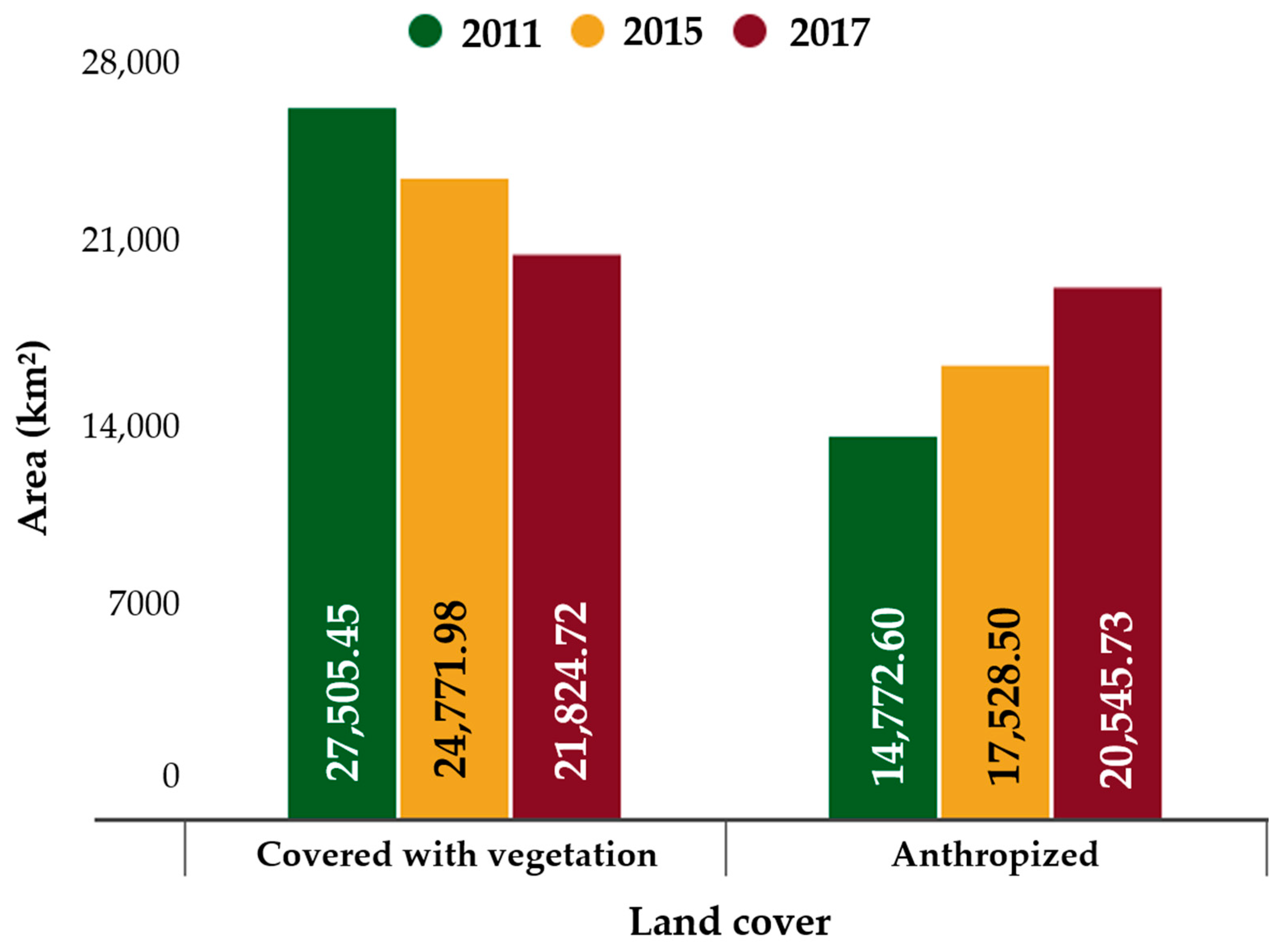
Publisher’s Note: MDPI stays neutral with regard to jurisdictional claims in published maps and institutional affiliations. |
© 2021 by the authors. Licensee MDPI, Basel, Switzerland. This article is an open access article distributed under the terms and conditions of the Creative Commons Attribution (CC BY) license (https://creativecommons.org/licenses/by/4.0/).
Share and Cite
Cardoso, M.C.; Alves, H.d.S.; Costa, I.C.N.P.; Vieira, T.A. Anthropogenic Actions and Socioenvironmental Changes in Lake of Juá, Brazilian Amazonia. Sustainability 2021, 13, 9134. https://doi.org/10.3390/su13169134
Cardoso MC, Alves HdS, Costa ICNP, Vieira TA. Anthropogenic Actions and Socioenvironmental Changes in Lake of Juá, Brazilian Amazonia. Sustainability. 2021; 13(16):9134. https://doi.org/10.3390/su13169134
Chicago/Turabian StyleCardoso, Marcelia Castro, Helionora da Silva Alves, Izaura Cristina Nunes Pereira Costa, and Thiago Almeida Vieira. 2021. "Anthropogenic Actions and Socioenvironmental Changes in Lake of Juá, Brazilian Amazonia" Sustainability 13, no. 16: 9134. https://doi.org/10.3390/su13169134
APA StyleCardoso, M. C., Alves, H. d. S., Costa, I. C. N. P., & Vieira, T. A. (2021). Anthropogenic Actions and Socioenvironmental Changes in Lake of Juá, Brazilian Amazonia. Sustainability, 13(16), 9134. https://doi.org/10.3390/su13169134






